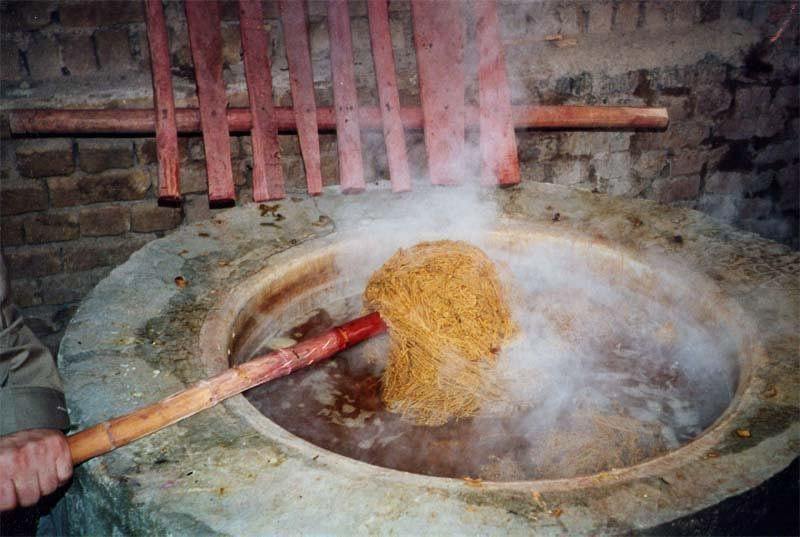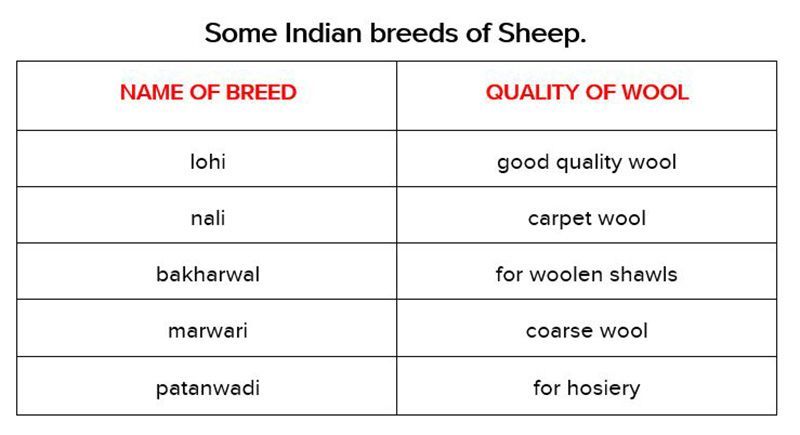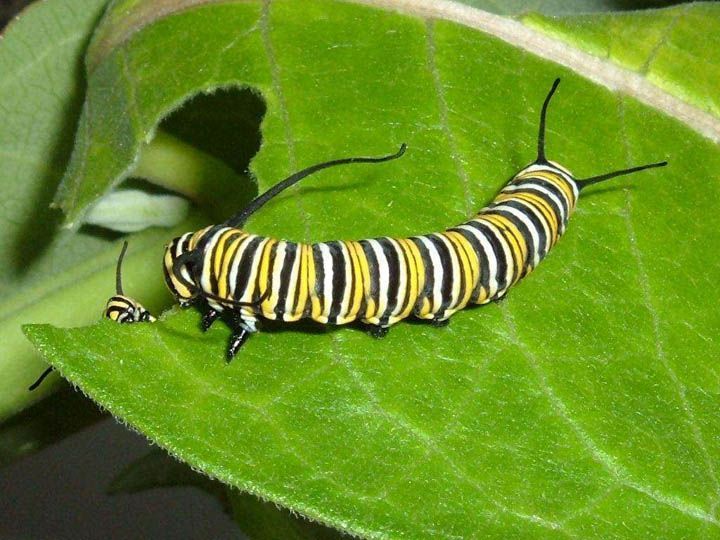Hair to Wool
Rearing
Sheep are reared mainly for their wool. They are mainly reared in areas with low rainfall. In India, they are mainly reared in hills of Jammu and Kashmir, Himachal Pradesh, Uttarakhand, Arunachal Pradesh and Sikkim. Sheep have a lifespan of about 10-12 years. They eat grass and leaves. Reared sheep are also fed on a mixture of pulses, corn, jowar, oil cakes and minerals. In winters they are kept indoors and fed on dry fodder, leaves and grains.
Shearing
Once a sheep develops a thick coat of hair, it is shaved off for getting wool. The removal of wool from a sheep is caUed shearing. It can be done manually with a large razor or with a shearing machine. Shearing is usually done during the hot season.
Scouring
The sheared hair is moved through tubs filled with soapy water to remove dust, dirt and grease. This is known as scouring. It is then passed through a series of rollers and dryers.
Sorting
Sorting consists of separating hair of different textures.
Removing burr
Burrs are soft fluffy fibres in wool (similar to those that often appear on sweaters you wear). These are removed manually.
Dyeing

The natural hair of sheep is white, brown or black. It is dyed in different colours.
Making Yarn
Next the wool is straightened, combed and spun into yarn. After spinning, the wool is either woven or knitted. Longer fibres are knitted into wool for sweaters. The shorter fibres are woven into woollen doth. The quality of wool varies from one breed of sheep to another. The quality is decided on the basis of thickness, length, shine, strength and colour of the fibre.



